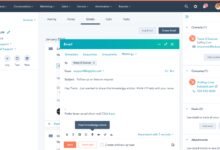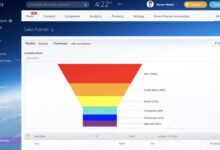Salesforce CRM Cost: 7 Shocking Truths You Must Know in 2024
Thinking about adopting Salesforce but worried about the price tag? You’re not alone. The real Salesforce CRM cost goes far beyond the monthly subscription — and understanding it can save your business thousands.
[ez-toc]
Salesforce CRM Cost: Breaking Down the Pricing Structure

Salesforce doesn’t follow a one-size-fits-all pricing model. Instead, it offers a tiered structure that scales with your business needs, making it flexible but often confusing for first-time buyers. The base cost per user per month is just the starting point. Hidden fees, add-ons, and implementation expenses can quickly inflate your total investment.
Understanding the Core Editions and Their Base Prices
Salesforce offers several main editions, each tailored to different business sizes and requirements. The most commonly used include Essentials, Professional, Enterprise, and Unlimited. As of 2024, the monthly cost per user starts at $25 for Essentials and can go up to $500 for Unlimited.
- Essentials: $25/user/month — ideal for small businesses with basic CRM needs.
- Professional: $80/user/month — adds workflow automation and customization.
- Enterprise: $165/user/month — full API access and advanced customization.
- Unlimited: $500/user/month — premium support and unlimited customizations.
These prices are listed on the official Salesforce pricing page, but they rarely reflect the final bill. Additional features, user roles, and third-party integrations can significantly increase the total Salesforce CRM cost.
Additional Costs Beyond the Subscription
Many businesses underestimate the full scope of the Salesforce CRM cost because they focus only on the subscription. However, other critical expenses include:
- Implementation Services: Hiring consultants or partners to set up your CRM can cost between $5,000 and $100,000 depending on complexity.
- Training: Onboarding your team may require paid training sessions or certifications.
- Custom Development: Building custom apps or workflows often requires developers, increasing long-term costs.
- Data Migration: Transferring existing customer data into Salesforce isn’t always free or simple.
“The sticker price of Salesforce is just the tip of the iceberg. The real cost lies in adoption, integration, and ongoing management.” — CRM Industry Analyst, Gartner
Hidden Fees That Inflate Your Salesforce CRM Cost
One of the biggest complaints from Salesforce customers is the presence of hidden or unexpected fees. While Salesforce is transparent about base pricing, many additional charges only become apparent after implementation.
Cost of Add-Ons and AppExchange Integrations
The Salesforce AppExchange hosts over 5,000 third-party apps that extend functionality. While some are free, many popular tools — like marketing automation, advanced reporting, or AI analytics — come with monthly fees per user.
For example, Pardot, Salesforce’s own marketing automation tool, starts at $1,250/month for up to 10,000 contacts. If you’re using multiple apps, these costs stack up fast. A company with 50 users using just three paid apps could easily add $3,000/month to their Salesforce CRM cost.
Explore available apps at Salesforce AppExchange to estimate potential integration costs.
Storage and Data Limits
Salesforce imposes data storage limits based on your edition. Exceeding these limits triggers additional charges:
- Essentials: 500 MB per user
- Professional: 1 GB per user
- Enterprise: 10 GB per user
- Unlimited: Unlimited storage (but with usage caps)
If your business handles large volumes of customer data, emails, or files, you may need to purchase additional storage at $0.25 per MB per month — which can become expensive quickly.
Implementation Costs: The Biggest Surprise in Salesforce CRM Cost
Implementation is often the most underestimated component of the total Salesforce CRM cost. Many companies assume they can set it up in-house, only to realize the complexity involved in data migration, user training, and system integration.
Hiring Salesforce Consultants or Partners
Most mid-sized to large businesses hire certified Salesforce consultants or implementation partners. These professionals charge between $150 and $300 per hour. A typical implementation can take 40 to 200 hours, depending on the scope.
For example, a 100-hour project at $200/hour equals $20,000 in consulting fees alone. This doesn’t include project management, testing, or post-launch support.
Find certified partners through the Salesforce Partner Directory.
DIY vs. Professional Setup: What’s More Cost-Effective?
While some small businesses attempt a DIY setup to save money, this often leads to configuration errors, poor data hygiene, and low user adoption. The long-term cost of fixing mistakes can exceed the initial savings.
Professional setup ensures proper data architecture, automation workflows, and user training — all of which improve ROI. For companies with more than 10 users, investing in professional implementation is usually more cost-effective in the long run.
“Companies that skip proper implementation spend 2–3x more later fixing issues than they would have paid upfront.” — Salesforce Implementation Expert, Deloitte
User Licensing and Seat Management
One of the most scalable — and potentially costly — aspects of Salesforce CRM cost is user licensing. Each employee who needs access requires a paid license, and downgrading or removing users isn’t always straightforward.
Different License Types and Their Impact on Cost
Salesforce offers various license types beyond the main editions, including:
- Lightning Platform Starter: $25/user/month — limited access for internal collaborators.
- Lightning Platform Plus: $100/user/month — more customization and API access.
- Community Licenses: $10–$100/user/month — for customers or partners accessing portals.
- Chatter Free: Free — basic collaboration only.
Choosing the right license type for each user can significantly reduce your total Salesforce CRM cost. Over-licensing (giving users higher-tier access than needed) is a common and expensive mistake.
Strategies to Optimize User Seat Costs
To control licensing expenses:
- Conduct regular license audits to identify inactive or over-privileged users.
- Use role-based access control to assign the lowest necessary license type.
- Consider temporary licenses for seasonal staff.
- Negotiate multi-year contracts for volume discounts.
Many organizations save 15–30% annually simply by optimizing their user seat allocation.
Customization and Development Expenses
Salesforce’s power lies in its flexibility, but customization comes at a price. Whether you’re building custom objects, automating workflows, or integrating with external systems, development costs can add up fast.
When to Use Salesforce Developers vs. Low-Code Tools
Salesforce offers low-code tools like Flow Builder and Process Builder, allowing non-developers to automate tasks. These tools reduce dependency on expensive developers and lower long-term costs.
However, complex business logic, integrations, or custom UIs often require Apex (Salesforce’s programming language) and Visualforce development — services that command high hourly rates.
The key is balancing self-service tools with professional development. Empower business analysts with training on Flow, but bring in developers only when necessary.
Cost of Building Custom Apps on Salesforce Platform
Many companies build custom apps on the Salesforce Platform (formerly Force.com). While this enhances functionality, it requires:
- Developer licenses ($200+/user/month)
- Additional sandbox environments ($500–$2,000/year)
- Code review and security testing
- Ongoing maintenance and updates
A simple custom app might cost $10,000 to build, while enterprise-grade solutions can exceed $100,000. Always evaluate whether an AppExchange solution could meet your needs at a lower cost.
Annual Contracts and Negotiation Tactics
Salesforce rarely offers month-to-month subscriptions. Most plans require annual commitments, which can lock you into higher costs if not negotiated wisely.
How to Negotiate Lower Salesforce CRM Cost
Unlike many SaaS platforms, Salesforce prices are negotiable — especially for businesses purchasing 10+ licenses. Key negotiation tactics include:
- Requesting multi-year discounts (up to 20–30% off)
- Bundling products (Sales Cloud, Service Cloud, Marketing Cloud)
- Asking for free training or implementation credits
- Timing your purchase near quarter-end when sales reps are eager to close deals
Working with a Salesforce partner can also improve your negotiating power, as they often have volume discounts and incentive programs.
Understanding Contract Lock-In and Exit Penalties
Canceling a Salesforce contract early can result in penalties or loss of prepaid fees. Always read the fine print and understand:
- Auto-renewal clauses
- Data export rights
- Transition support availability
If you anticipate scaling down, consider starting with a smaller user count and scaling up, rather than overcommitting upfront.
Total Cost of Ownership: The Real Salesforce CRM Cost
To truly understand the Salesforce CRM cost, you must calculate the Total Cost of Ownership (TCO) over 3–5 years. This includes subscription, implementation, training, maintenance, and opportunity costs.
Calculating 3-Year and 5-Year TCO
Let’s break down a realistic 3-year TCO for a mid-sized company with 50 users on the Enterprise edition:
- Subscriptions: 50 users × $165 × 12 months × 3 years = $297,000
- Implementation: $25,000 (one-time)
- Training: $10,000 (yearly) × 3 = $30,000
- App Integrations: $2,000/month × 36 = $72,000
- Maintenance & Support: $15,000/year × 3 = $45,000
Total 3-Year TCO: $469,000
Over five years, this could exceed $700,000. While Salesforce delivers significant ROI for many businesses, this level of investment requires careful planning and budgeting.
ROI: Is Salesforce Worth the Cost?
Despite the high TCO, Salesforce consistently delivers strong ROI when implemented correctly. According to Nucleus Research, the average ROI for Salesforce is $8.71 for every $1 spent.
Key benefits driving ROI include:
- Improved sales productivity (up to 34% increase)
- Faster deal closure (reduced sales cycle by 20–30%)
- Higher customer retention rates
- Better data visibility and forecasting accuracy
The key is aligning Salesforce usage with business goals and ensuring high user adoption.
Alternatives to Reduce Salesforce CRM Cost
If the full Salesforce CRM cost is beyond your budget, several alternatives can provide similar functionality at a lower price point.
Lighter CRM Options with Lower Price Tags
Consider these cost-effective alternatives:
- HubSpot CRM: Free core features, paid plans start at $45/month.
- Zoho CRM: Starts at $14/user/month with robust automation.
- Pipedrive: $14.90/user/month, ideal for sales-focused teams.
- Insightly: $29/user/month, good for small businesses.
These platforms may lack some of Salesforce’s advanced features but are often sufficient for SMBs.
Using Salesforce Lite or Community Editions
Salesforce offers a free Community Edition for nonprofits, which includes core CRM functionality. Additionally, the Essentials edition is designed for small businesses and starts at $25/user/month.
For internal collaboration, Chatter Free and Lightning Platform Starter licenses can reduce costs for non-core users.
Learn more about nonprofit options at Salesforce.org.
What is the starting price for Salesforce CRM?
The starting price for Salesforce CRM is $25 per user per month for the Essentials edition. However, most businesses end up paying more due to additional features, user licenses, and implementation costs.
Is Salesforce worth the cost for small businesses?
For small businesses with simple needs, Salesforce may be overkill. However, if you plan to scale quickly or require deep customization, the investment can pay off. Consider starting with Essentials or exploring lighter alternatives first.
Can you negotiate Salesforce pricing?
Yes, Salesforce pricing is negotiable, especially for annual contracts with 10+ users. You can often secure discounts, free training, or implementation credits by negotiating with a sales representative or through a partner.
What is the biggest hidden cost in Salesforce CRM?
The biggest hidden cost is implementation — including consulting, data migration, and training. Many businesses underestimate this and end up spending tens of thousands more than expected.
How can I reduce my Salesforce CRM cost?
You can reduce costs by optimizing user licenses, using low-code tools instead of custom development, auditing app usage, and negotiating multi-year contracts. Regular cost reviews can help identify savings opportunities.
Understanding the true Salesforce CRM cost is essential for making an informed decision. While the platform offers unmatched functionality and scalability, its price can escalate quickly without proper planning. From subscription fees to implementation, customization, and ongoing maintenance, every layer adds to the total investment. By evaluating your needs, negotiating wisely, and optimizing usage, you can maximize ROI and avoid budget overruns. Whether you choose Salesforce or explore alternatives, a clear cost analysis is the first step toward a successful CRM strategy.
Salesforce CRM cost – Salesforce CRM cost menjadi aspek penting yang dibahas di sini.
Further Reading:



